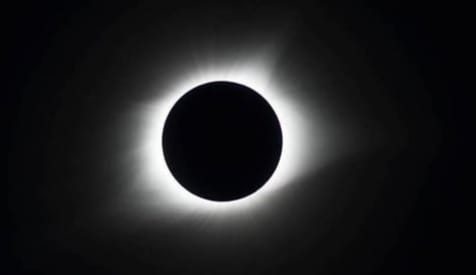Total solar eclipse 2024: First celestial event to occur on THIS date, The total solar eclipse of April 8, 2024, will be the first celestial event of its kind to occur on that specific date. However, it’s important to clarify that it won’t be the first celestial event ever to occur on April 8th. Every night, the sky offers diverse astronomical phenomena depending on your location and time of observation. For instance, you might see stars, planets, constellations, meteor showers, or even the moon (in various phases) every April 8th, depending on the year.
As per NASA, A total solar eclipse happens when the Moon passes between the Sun and Earth, completely blocking the face of the Sun. People located in the centre of the Moon’s shadow when it hits Earth will experience a total eclipse. NASA states that a total solar eclipse is the only type of solar eclipse where viewers can momentarily remove their eclipse glasses (which are not the same as regular sunglasses) for a brief period when the Moon is completely blocking the Sun.
Total solar eclipse 2024: First celestial event to occur on THIS date..
However, the total solar eclipse of April 8, 2024, is unique because:
- It’s a total eclipse: The moon completely blocks the sun, creating a spectacular and rare event.
- It’s visible from North America: This isn’t always the case with eclipses, which have specific paths of totality across the globe.
- It’s the last total solar eclipse completely visible from the contiguous United States until 2044: This adds to the excitement and historical significance for many skywatchers.
- The sky-gazers is set to soon witness the first celestial event of the year. A total solar eclipse will be witnessed in the month of April. A total eclipse occurs when the moon completely obscures the sun.
Therefore, while not the first celestial event ever on April 8th, it undeniably holds a special place due to its specific characteristics and impact on a large geographical area.
Here are some additional details about the event:
- Date: April 8, 2024
- Time: The eclipse will begin over the South Pacific Ocean and enter continental North America in Texas around 11:07 AM PDT. The path of totality stretches across several states and Canada, ending on the Atlantic coast of Newfoundland around 5:16 PM NDT.
- Safety: Never look directly at the sun, even during a partial eclipse. Use safe solar viewing glasses certified to block harmful solar radiation.
If you’re interested in learning more about the eclipse or celestial events in general, here are some resources:
- NASA Eclipse Website: https://eclipse.gsfc.nasa.gov/
- Time and Date Eclipse Information: https://www.timeanddate.com/eclipse/
- American Astronomical Society: https://aas.org/
Will it be visible in India?
As per reports, the total solar eclipse will not be visible in India.
Is this the first total solar eclipse ever?
No, total solar eclipses happen somewhat regularly, but they are only visible from specific locations on Earth. This particular eclipse is the first to completely block the sun across parts of North America since 2017.
Why is it called a “total” solar eclipse?
During a total eclipse, the moon completely covers the sun, blocking its light and creating darkness for a brief period. This is different from a partial eclipse where only part of the sun is covered.
What’s the path of totality?
The path of totality is the narrow band on Earth where the moon completely covers the sun. This eclipse’s path starts in Mexico, crosses the US diagonally from Texas to Maine, and ends in Canada.
What will the eclipse look like?
During totality, the sky will darken dramatically, and you might see stars and planets emerge. The sun’s corona, a faint layer around the sun, will become visible.
What activities can I do during the eclipse?
Many communities host eclipse viewing events. You can also gather with friends and family, take pictures, and enjoy the unique experience.
